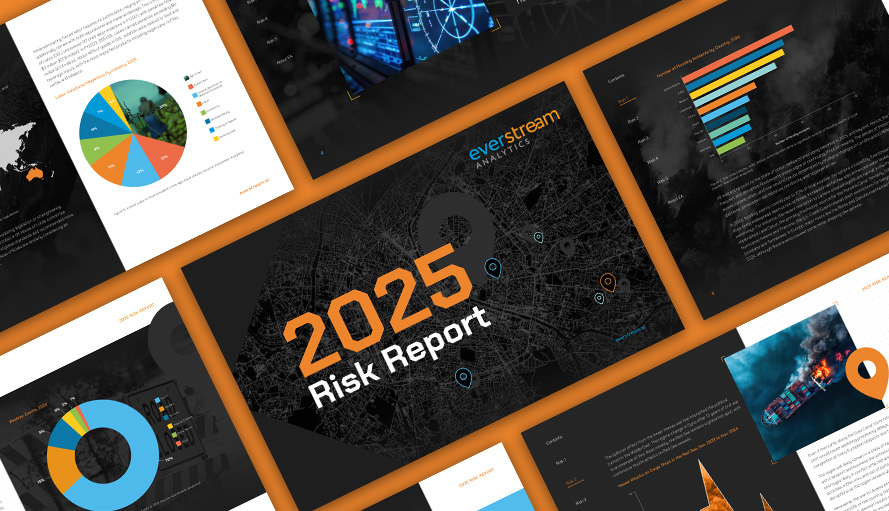That’s why weak links in sub-tiers present such a risk throughout the entire supply chain. Many companies fail to thoroughly vet the cybersecurity practices of their suppliers, or take their word using point-in-time manual security questionnaires. Additionally, outdated software and legacy systems may provide easy entry points for attackers. Finally, companies that don’t have robust cybersecurity protocols in place, including basic measures such as regular software updates, encryption, and access controls, will find themselves increasingly vulnerable to hackers.
The cybersecurity risk landscape in supply chains isn’t static, but constantly evolving. Driven by the rapid pace of technological advancements and sophisticated cybercriminals, attackers consistently adapt their tactics to exploit new vulnerabilities. Furthermore, the rise of state-sponsored cyberattacks and organized hacking groups adds an additional layer of complexity.
Therefore, organizations across industries must prioritize consistent and up-to-date cybersecurity measures to mitigate future threats. Cybersecurity isn’t just a point-in-time checkbox exercise. Instead, companies must ensure they are regularly and stringently vetting their suppliers, completing frequent security assessments, and monitoring for emerging threats and situations.
 Figure 1: Historical cyber-attacks within key industries. Manufacturing is the most impacted sector in recent years (source: Everstream Analytics)
Figure 1: Historical cyber-attacks within key industries. Manufacturing is the most impacted sector in recent years (source: Everstream Analytics)
Key cyber risks and contributing factors
There are several key cyber risks that an organization may face:
- Data breaches: Often, cyberattackers aim to expose sensitive data, such as customers’ personal identifiable information, medical information, or payment information. These breaches can compromise confidential business strategies, customer trust, and proprietary data and intellectual property, leading to reputational damage and legal liabilities.
- Ransomware attacks: Cyberattackers may infiltrate systems with the intention of holding key data for ransom, demanding payments to restore access. Ransom, data recovery, and operational recovery can all incur significant financial damages.
- System disruptions: Cyberattacks on key systems can halt production lines, delay deliveries, and create widespread chaos. At best, this can impact customer trust. At worst, if a cyberattack disrupts critical national infrastructure, such as an energy supplier, it can lead to serious disasters.
Several factors exacerbate these risks. For instance, a lack of standardized security practices across suppliers can create uneven defenses and easy entry points into a supply chain. No matter how strong an organization’s cybersecurity capabilities are, they are ultimately only as secure as their least secure sub-tier supplier.
Furthermore, the complexity and opacity of supply chain networks compounds already-present vulnerabilities. Without a full understanding of an organization’s supply chain to the nth degree, it can be difficult to identify weak links.
 Figure 2: U.S. companies are top cyberattack targets in 2024 (source: Everstream Analytics)
Figure 2: U.S. companies are top cyberattack targets in 2024 (source: Everstream Analytics)
Cyber regulations and compliance
Regulations and compliance standards play a pivotal role in strengthening cybersecurity within supply chains, providing a roadmap for robust security practices and enforcing accountability among businesses and their suppliers. For example, depending on where an organization operates and their industry, they could be subject to regulations such as the EU’s General Data Protection Regulation (GDPR), the UK’s Network and Information (NIS) Regulations, the US’s Health Insurance Portability and Accountability Act (HIPAA), and more. Each of these regulations mandates specific measures for data and cyber protection, encouraging organizations to ensure they have strong cybersecurity measures in place.
Adhering to these standards is crucial. Compliance ensures that businesses protect sensitive information, and fosters trust and transparency among stakeholders, including customers, partners, and regulators. It also helps organizations avoid the legal and financial repercussions associated with major cyber incidents.
Best practices & next steps
Cyber risks will only continue to grow in 2025. Take the time to review your current cybersecurity measures, and make sure your organization is up to the task of preventing costly cyber attacks through a comprehensive, proactive strategy.
- Conduct thorough risk assessments. Ensure that you have a regular cadence in place to assess your end-to-end supply chain for new and existing cyber risks and weak points.
- Implement strong vendor management protocols. When is the last time you checked on your suppliers? Do they meet all of the relevant cybersecurity standards? Conduct regular audits, and consider incorporating cybersecurity clauses in your supplier contracts.
- Enhance communication and collaboration. Sharing threat intelligence among stakeholders helps to create a collective defense against malicious actors. If you spot a threat, let those around you know – a rising tide of cyberdefense lifts all boats.
- Let the robots do some of the work. Adopting Artificial Intelligence and machine learning enables real-time threat detection, predictive analysis, and automated responses. By implementing these advanced technologies, you can be more aware of any emerging cyber threats, and respond quickly and effectively.
- Train your employees. Human error still remains a significant vulnerability, so training your employees to recognize common cyberattacks such as phishing and social engineering can go a long way to protecting your organization and greater supply chain.
- Implement zero-trust architecture. Zero-trust principles, or restricting access based on necessity and continuously verifying users, reduces the risk of unauthorized access. Even if one system is compromised, the damage can be contained.
As cyber threats grow more sophisticated and pervasive, organizations must take proactive steps to secure their supply chains. By adopting comprehensive security measures, adhering to regulatory standards, and fostering a culture of collaboration and vigilance, businesses can safeguard their operations and reduce vulnerabilities.

 Figure 1:
Figure 1:  Figure 2: U.S. companies are top cyberattack targets in 2024 (source: Everstream Analytics)
Figure 2: U.S. companies are top cyberattack targets in 2024 (source: Everstream Analytics)